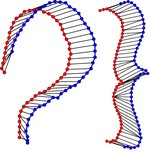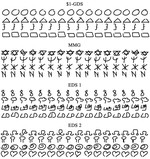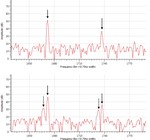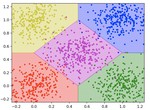Machete: Easy, Efficient, and Precise Continuous Custom Gesture Segmentation
We present Machete, a straightforward segmenter one can use to isolate custom gestures in continuous input.
PhyAR: Determining the Utility of Augmented Reality for Physics Education in the Classroom
In this paper, we present a qualitative analysis of a prototype augmented reality application for the Microsoft Hololens with a focus on physics education.
Moving Toward an Ecologically Valid Data Collection Protocol for 2D Gestures In Video Games
Those who design gesture recognizers and user interfaces often use data collection applications that enable users to comfortably …
Examining Training Comprehension and External Cognition in Evaluations of Uncertainty Visualizations to Support Decision Making
Building on recent work, we investigated the effect of training comprehension on performance across varying representations of uncertainty and varying degrees of visualization interactivity using a simulated course of action selection task.
Determining Design Requirements for AR Physics Education Applications
We present the results of a series of interviews with secondary school teachers about their experience with AR and the features which would be most beneficial to them from a pedagogical perspective.
Examining the Impact of Training and Feedback on Visualization-Supported Decision Making under Uncertainty
We evaluated how variations in training, coupled with assessments of knowledge acquisition and application, can inform uncertainty visualization research.
Determining the effect of training on uncertainty visualization evaluations
We evaluated how variations in training, coupled with assessments of knowledge acquisition and application, can inform uncertainty visualization research.
Multiwave: Complex Hand Gesture Recognition Using the Doppler Effect
We built an acoustic, gesture-based recognition system called Multiwave, which leverages the Doppler Effect to translate multidimensional movements into user interface commands.
Jackknife: A Reliable Reliable with Few Samples and Many Modalities
Our dynamic time warping based approach for both segmented and continuous data is designed to be a robust, go-to method for gesture recognition across a variety of modalities using only limited training samples.
A Rapid Prototyping Approach to Synthetic Data Generation for Improved 2D Gesture Recognition
We introduce a novel technique called gesture path stochastic resampling (GPSR) that is computationally efficient, has minimal coding overhead, and yet despite its simplicity is able to achieve higher accuracy than competitive, state-of-the-art approaches.
Multiwave: Doppler Effect Based Gesture Recognition in Multiple Dimensions
We present the results of a user study of Multiwave to evaluate recognition rates for different gestures and report accuracy rates comparable to or better than the current state of the art.
Multimodal Input for Perceptual User Interfaces
The use of multiple modes of user input to interact with computers and devices is an active area of human computer interaction …
Exploring Head Tracked Head Mounted Displays for First Person Robot Teleoperation
We explore the capabilities of head tracking combined with head mounted displays (HMD) as an input modality for robot navigation.
A $-Family Friendly Approach to Prototype Selection
We explore the benefits of intelligent prototype selection for $-family recognizers.







